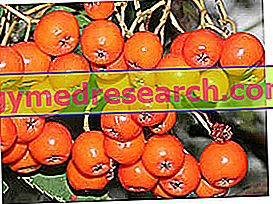
Sorbic acid is a preservative of natural origin (in nature it is found in the fruits of Sorbus aucuparia and in other Rosaceae), which can be produced synthetically (like the one commonly used in industries).
It has a very low toxicity: this is because it is used in reduced doses (0.2 mg / Kg), and because its LD50 is over 5g / Kg. Therefore, being used in such limited doses, and having such a high lethal dose per kg, it is a preservative that can be considered safe. Few people, in fact, experience allergic reactions to sorbic acid.

Sorbic acid performs its maximum function against fungi and yeasts, while it is not effective against bacteria. It carries out its optimal activity at pH lower than 6.5 (therefore in acid or slightly acid foods).
Despite the sorbic acid has a very high lethal dose, it is necessary to make a small reflection: being a very used preservative it is possible (even if it happens rarely), that during the day so many foods containing E200 are consumed to be able to consume doses close to toxic; for this reason it is recommended to carefully check the various labels to prevent this from occurring. If the toxic dose is reached, it is thought that this preservative can present health risks because it can alter the enzyme systems of the human body.
Being insoluble in water, the salts of sorbic acid are very often used:
- SORBATE OF SODIUM
- POTASSIUM SORBATE
- SOCCER SORBATE
| E200 | E201 | E202 | E203 | E210 | E211 | E212 | E213 |
| E214-E2119 | E220 | E221 | E222 | E223 | E224 | E225 | E226 |
| E227 | E228 | E230 | 231 | E232 | E233 | E234 | E235 |
| E236 | E237 | E238 | E239 | E240 | E242 | E249 | E250 |
| E251 | E252 | E260 | E261 | E262 | E263 | E270 | E280 |
| E284 | E285 | E290 | E296 | E297 |




